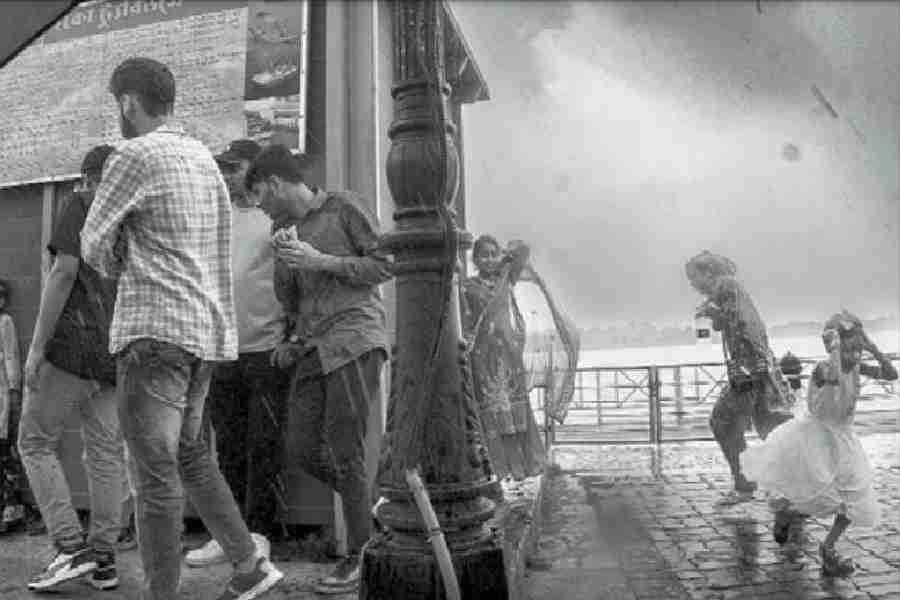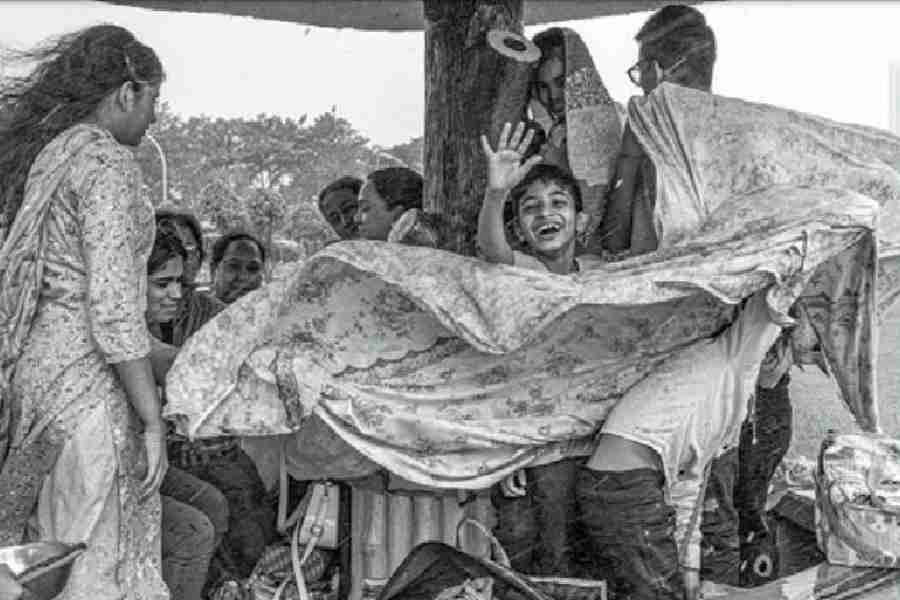If you are not a good human being, you can’t do great photography. Otherwise, you will do competent photography. There is nothing special in that.” Raghu Rai smiled kindly from his chair at the bunch of young photographers who were seated on the floor, looking up to him. They had enrolled for a street photography workshop with the lens legend. And silhouetted against the skyline on an observation deck at Eco Park, what he imparted was not hardcore technical tips but words of wisdom on the philosophy of photography.
Rai had given them a task — to shoot at Eco Park for two hours. He would be reviewing their submissions the day after, and discuss how to frame and see a picture. So, what he was telling them was very much on point. “The speciality of his pictures is the emotions they convey. Not just the vibrancy of the situation, his love for life and his personality come out in his photographs,” said Venkat Balasubramanian, a banker from Singapore who had taken three days’ leave from work to attend the workshop. “He is my inspiration for close to two decades.”
Rai encouraged them to free their mind. “If your mind is full of too many ideas, the photos you take will be mixed up. You will end up clicking pictures similar to those you have seen before. The mind is a sum total of your experiences. Empty your head and place the sensor of your heart behind your camera. That is the original you.” To stress his point, he said he would not mind if the participants did not show him even one picture from the photo walk. “If you share one line about your feelings instead, about how this experience has changed you, it will be enough.”
Click from the heart
Rai went on to share an incident to prove why feelings were more important than acquisitions, like expensive photography gear. He had gone to take pictures of Kumbh Mela some years ago. “I was staying 2.5km away from the fair. On the very first day, a local photographer came and touched my feet. He said he had started taking pictures on seeing my work. He offered to pick me up every day in his scooty to take me to the mela. Though there were traffic curbs, he said nobody stopped his scooty.”
The youth, Rai recalled, had an old Nikon DX and a 10-20mm lens with a “horribly wide zoom”. “I had no idea he was taking my pictures.”
When a photo was needed of Rai himself for the book, Rai sent out a public appeal seeking one. “The most striking pictures came from him. He had clicked me in such situations! I had climbed atop some sacks in one corner. All around there were thousands of people, women drying clothes… I was also shooting from a boat. At one point, I was so excited that I stood up and spread my arms and the whole sangam was at the back. A non-photographer had given me my best shots simply because he had no hangover.”
He stressed on morning as a good time to click people immersed in activities. “When you wake up you are close to God. As the day progresses, tension builds up and you become someone else,” he said, referring to the ghats of the Hooghly as a good spot for morning photography.
Rai urged them to always keep their camera at hand. “I do not walk around without my camera. It has become a part of my body,” he told them. “If you can always keep a mobile with you, why not a camera?” Banerjee added.
That brought up the subject of selfies. “Selfies are an expression of self-love. And the most horrible ones are those making faces,” Rai nodded in disapproval, referring to the pout, the ubiquitous selfie-takers’ pose.
As the sun dipped at the horizon, the students got busy clicking their last shot of the afternoon. This time their subject was the same — an octogenarian master holding forth, full of zest, framed against the setting sun.
MASTER’S CHOICES: Some of the frames Rai liked from the workshop

Lipika Debnath

Bhargav Patgiri

Arnab Biswas

Sandeepan Datta
